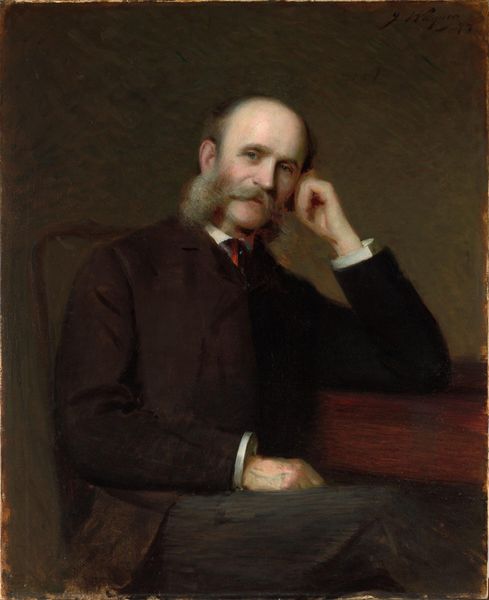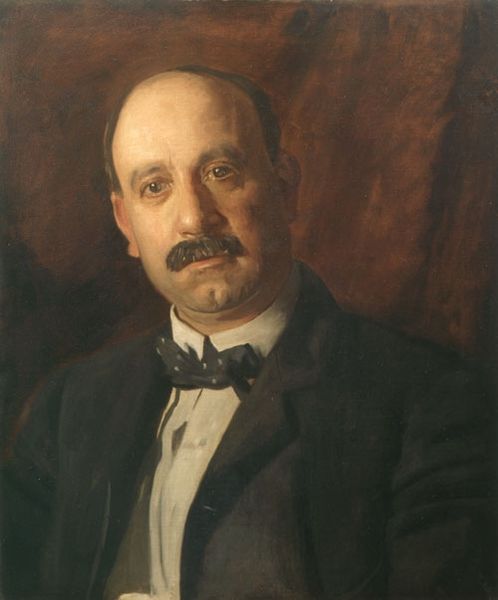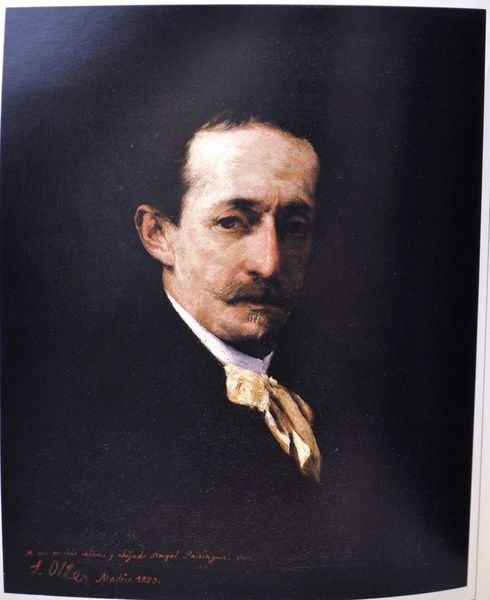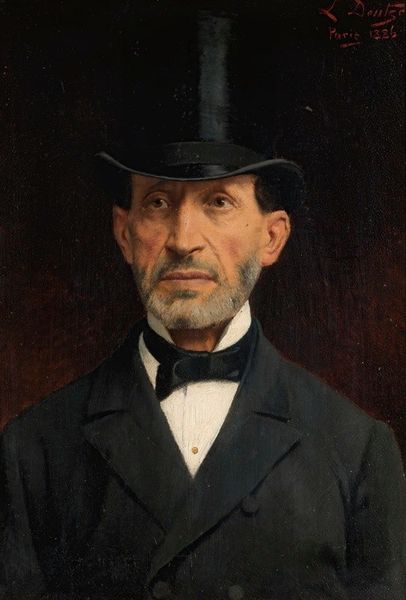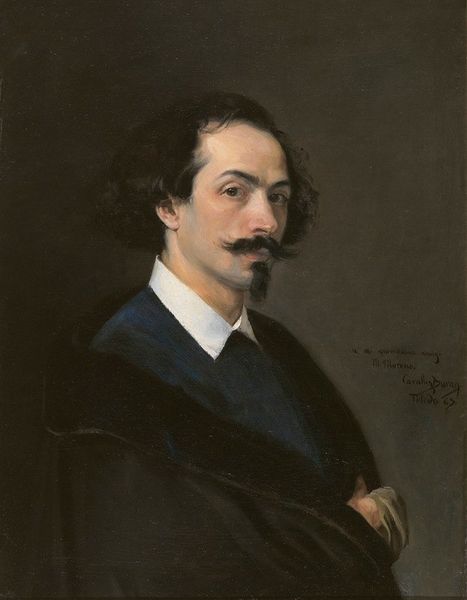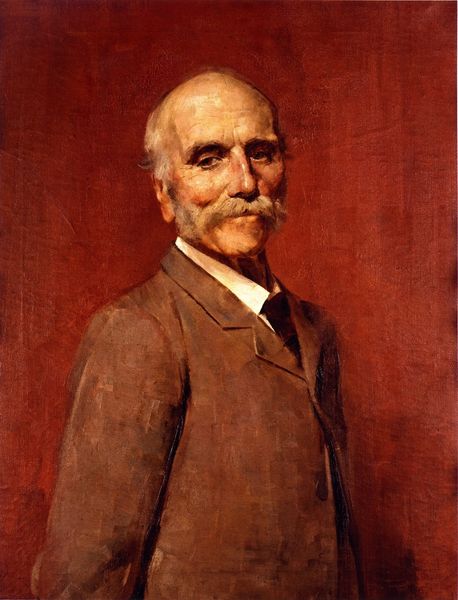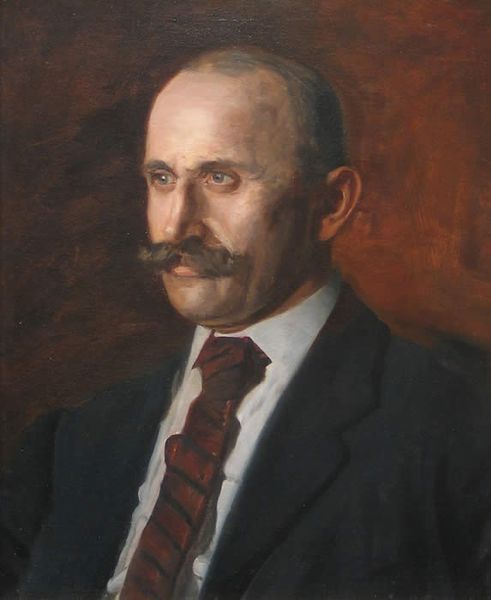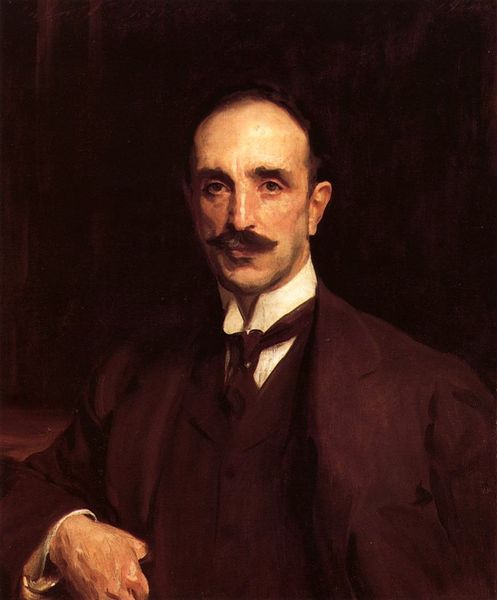
Dimensions: 65 x 54.5 cm
Copyright: Public domain
Curator: Here we have Francesco Hayez's "Portrait of the engineer Giuseppe Clerici," painted in 1875. It currently resides in a private collection. What are your first thoughts? Editor: Somber. The oil paint gives a certain weight, a feeling of… seriousness. The dark palette reinforces that, it seems. The man himself is quite stern, as if the very act of sitting was a laborious chore. Curator: That gravity speaks to the subject's position within 19th-century Italian society. Engineers were crucial for industrial progress; commissioning Hayez, a leading artist, emphasized their rising social standing. The portrait itself becomes a political act, announcing Clerici’s place within the burgeoning elite. Editor: I am more drawn to how the texture of the canvas and paint coalesce here. I am quite certain the labor that went into creating the oil, grinding pigments, mixing, all the hands involved to yield the materiality of this painting—the tools, brushes—are equally responsible for his likeness. It is interesting that these "raw materials" shape this idea of the refined engineer. Curator: Well, there's certainly an element of Romanticism in Hayez’s realistic style. He's not just painting a face; he's presenting a pillar of industry, subtly elevating him through artistic skill and portraying a man of that moment—Risorgimento’s Italy! Editor: That “Romantic” skill also translates to precise craftsmanship, which makes me consider the exchange of goods during production; a high-end commission certainly ensured he had premium material access. What price did "quality" exact on others' access to materials and labor? Curator: A vital consideration when looking at the patronage of the arts. So, Clerici’s legacy continues on several fronts here. Editor: Indeed. We witness how industry and artistic craftsmanship both have created, or helped build, a man's legacy.
Comments
No comments
Be the first to comment and join the conversation on the ultimate creative platform.
